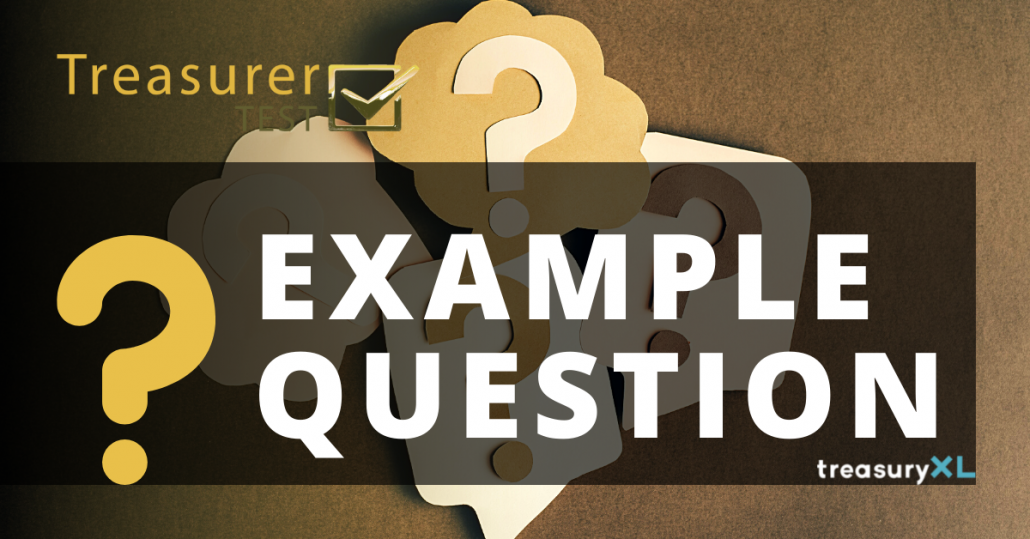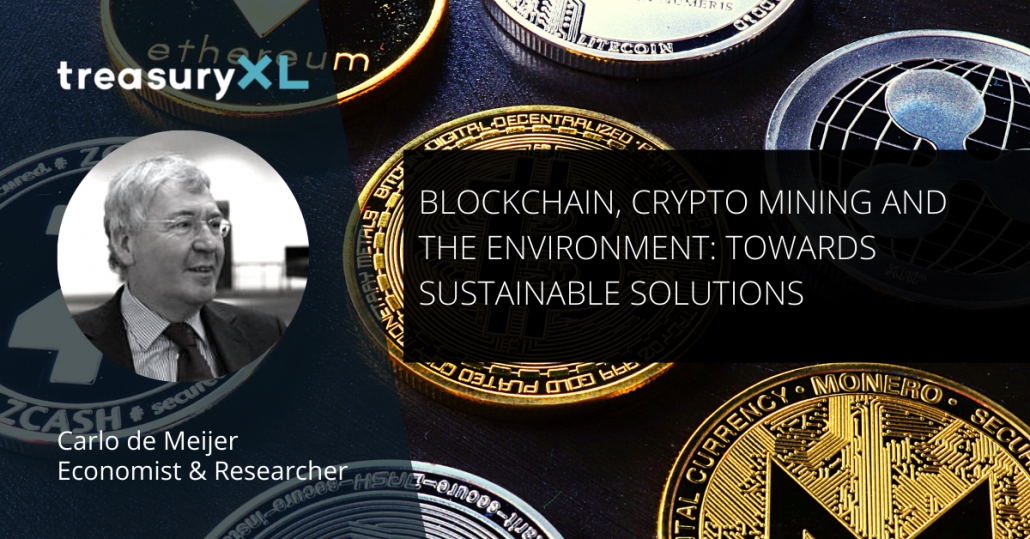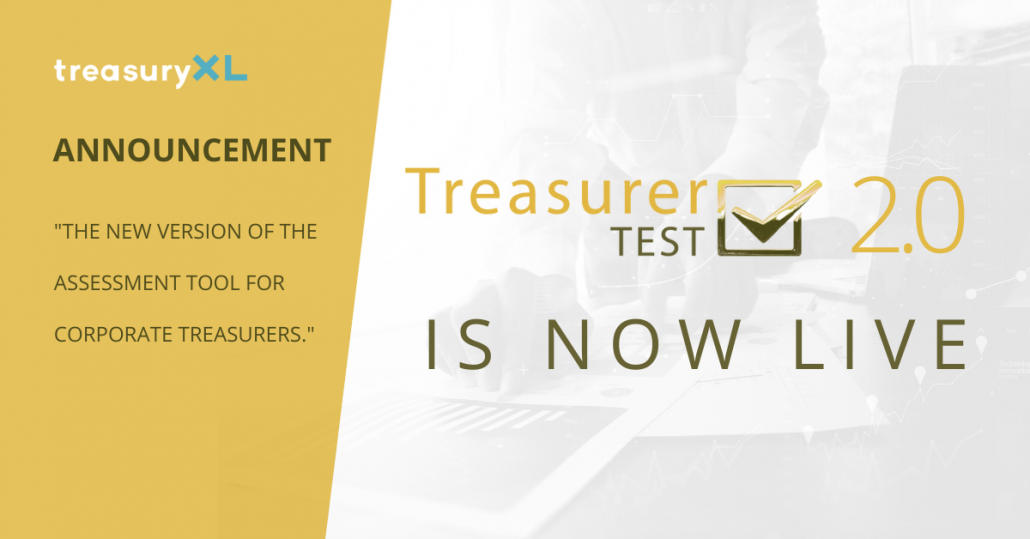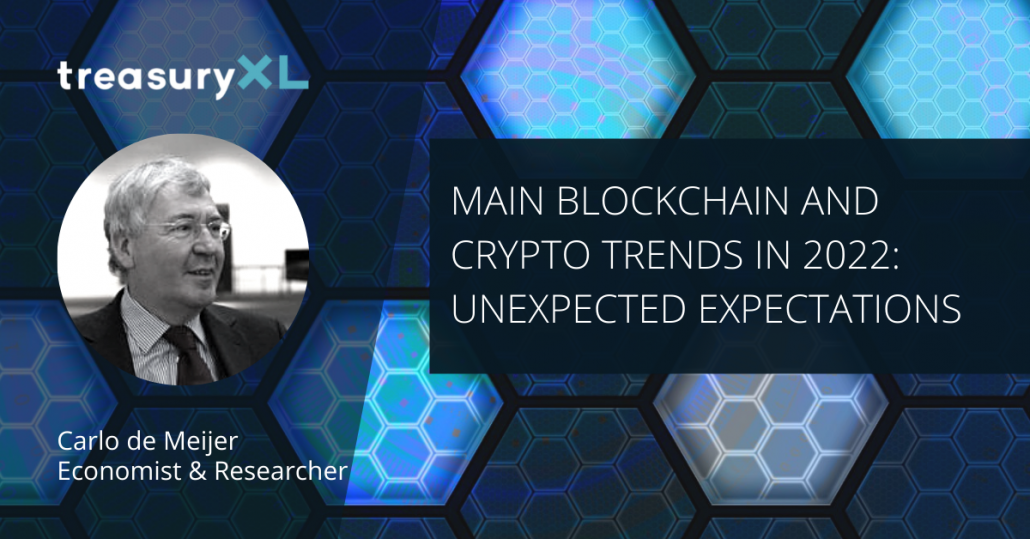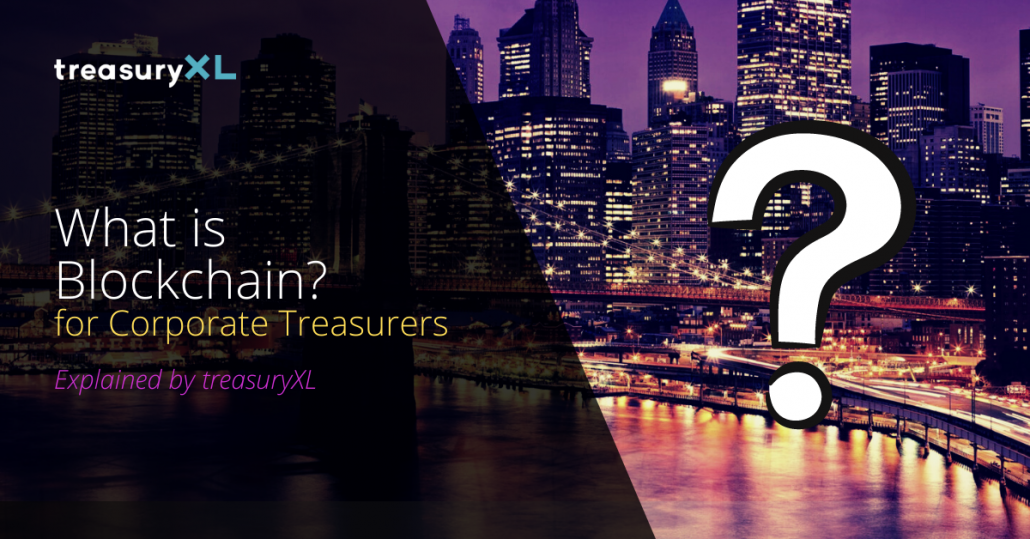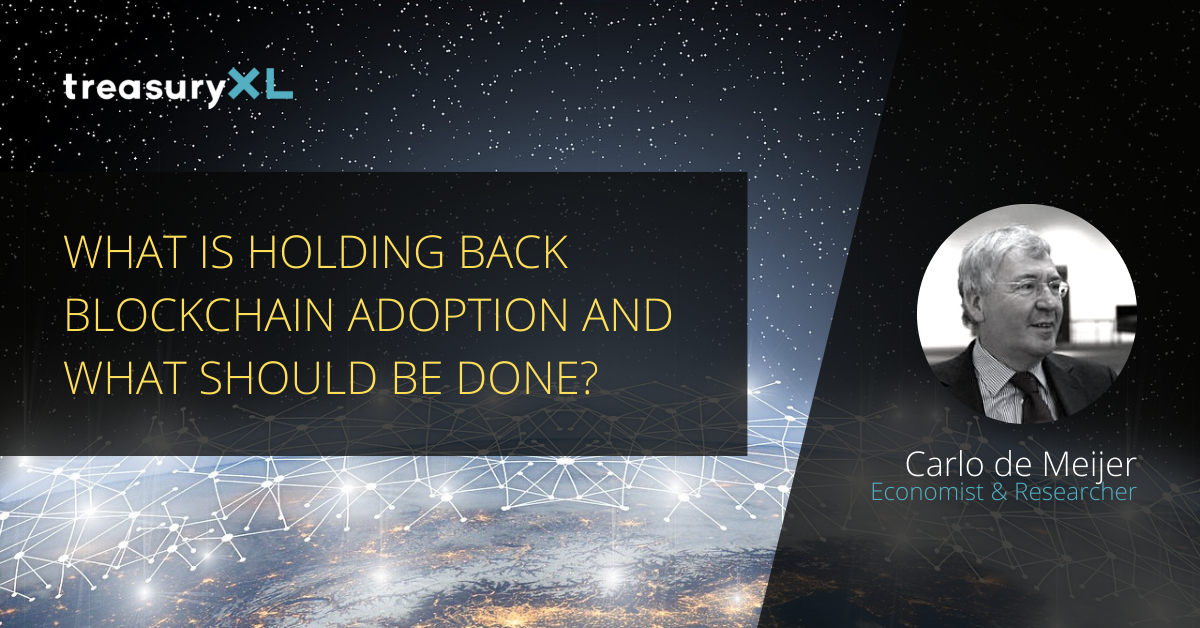Early this year I wrote a blog about the existing technology challenges that were holding back a more massive adoption of blockchain technology and of possible solutions that may tackle these. Though blockchain has many advantages this technology still has a lot of growing pains to go through before it could unlock its full potential.
So I was wondering where we are now. Gartner showed several times, any new technology – and that is blockchain too – has to go through various stages.
“According to recent surveys, almost 90% of blockchain-based projects still failed.”
And that is not strange. For new technologies, it takes a lot of time to get rid of all the challenges and use it to power the modern world. And these challenges are not only technical. What is the way forward?
Challenges
Blockchain technology has been surrounded by plenty of hypes, which makes many business leaders keenly interested in adopting it. Blockchain however faces different blockchain adoption challenges that make them reluctant. These are not only related to technological inefficiencies, but also to the lack of regulation and limited knowledge/awareness. Most of these challenges still need to be addressed and overcome in order for the technology to reach omnipresence and make blockchain a more acceptable technology for all.
Technological challenges
Although blockchain technology has a lot of benefits, it still has a number of shortcomings in technological ways, that are preventing a much higher adoption. Bitcoin but also other blockchains are well known for their inefficient technological design, leading to low scalability, lack of speed of the network, high energy consumption and as a result high costs of transactions. Besides, there is a lack of standardisation and interoperability, limiting the chance for different blockchains to communicate with each other. Ethereum tried to cover up a number of these defects, but it is still not enough.
Low scalability
First of all there is the scalability issue. Their limited capacity to scale in order to handle large transaction volumes. This so-called ‘scalability trilemma’ is the main reason why many doubt that blockchain systems would ever be capable of operating at scale. It essentially revolves around the difficulties current blockchain platforms experience when trying to find the right balance between scalability, decentralization and security. In reality, blockchains work fine for a small number of users. But what happens when a mass integration will take place? Ethereum and Bitcoin nowadays have the highest number of users on the network, but they are having a hard time dealing with the situation.
Lack of speed
Another important challenge that should be addressed is the need to increase the processing speeds. When the number of users increases, the network tends to slow down taking more time to process any transactions. This may result in huge transaction fees, making the technology less and less attractive. Also, the encryption of the system could make it even slower. Completing a transaction can take up to several hours or sometimes even days. It is thus most suited for making large transactions where time is not a vital element. This blockchain adoption challenge can become a hurdle soon.
High energy consumption
High energy consumption is a blockchain adoption challenge, especially now with the worldwide climate discussion. Most of the blockchain technologies follow Bitcoins infrastructure and use Proof of Work (PoW) as a consensus algorithm, thereby needing massive computational power, which is very energy-intensive.
This not only limits the opportunities for ordinary people to join PoW networks and hinders decentralization by encouraging the formation of large mining pools, but it also raises environmental concerns. At present, miners are using 0.2% of the total electricity. If it keeps increasing, then miners will take more power than the world can provide. Many organizations are trying to avoid blockchain altogether just for this challenge.
Lack of standardization
A fourth issue that is limiting a more massive blockchain adoption is the lack of standardization. Standards are required for any technology to have a scalable adoption across the globe. All networks which will be using blockchain technology need to speak the same language in order to be understood and to complete the transaction. All new technologies however suffer from this at the beginning till the standards slowly build up from experience.
Lack of interoperability
As more organizations begin adopting blockchain, there is a tendency for many to develop their own systems with varying characteristics (governance rules, blockchain technology versions, consensus models, etc.). These separate blockchains mostly do not work together, and there is currently no universal standard to enable different networks to communicate with each other. Blockchain interoperability includes the ability to share, see and access information across different blockchain networks without the need for an intermediary or central authority. This lack of interoperability can make mass adoption an almost impossible task.
Regulatory challenges
Next to these technological challenges, another big obstacle to blockchain adoption is the lack of regulatory clarity. Existing regulatory regimes are unable to keep up with the rapid development happening in blockchain and crypto. There aren’t any specific regulations about it. So, no one follows any specific rules when it comes to the blockchain.
Initial coin offerings, stablecoins and DeFi protocols have in recent years demonstrated the limitations of current rules and regulations when it comes to handling the sector. There are various challenges caused by this lack of regulation, including criminal activities, lack of privacy, and, although blockchain guarantees visibility as one of its benefits, there is still no security.
Criminal connection/activities
There is the anonymous feature of the blockchain technology that may become a great threat. The nature of the blockchain network is decentralized so that no one can know your true identity. Being anonymous is however quite convenient for illegal transactions. This has attracted criminals leading to various cybercrimes/illegal transactions such as crypto exchange hacks, scam projects, market manipulation asking cryptos in exchange as a ransom or using Bitcoin as a currency in the black market and on the dark web.
Lack of privacy
Privacy is another challenge as far as the blockchain is concerned. One of the greatest strengths of blockchain technology, public blockchain networks in particular, is the transparency that comes from having a record of a network’s transaction history that is public and easy to verify. This is however not always seen as a positive, as it also poses threat to privacy of organisations or the public using it. Many companies that work with privacy need to have defined boundaries. Enterprises, which want to protect their trade secrets and other sensitive information, are therefore reluctant to embrace some of the most prominent blockchain protocols.
Security and trust problems
Security is another crucial topic here that may limit blockchain adoption. Every blockchain technology talks about its security as the main advantage. But like any other technology, blockchain also comes with a number of security risks including coding flaws or loopholes. Ethereum allows developers to implement dApps based on their system. And there have been many dApps based on them. However, most of them seem to have a matter of false coding and loopholes. Users can utilize these loopholes and hack into the system quickly. The resulting lack of trust among blockchain users is another major obstacle to widespread implementation.
Educational challenges
Blockchain is still very much an emerging technology, and the skills needed to develop and use it are scarce, while the lack of awareness amongst the large public are challenging the adoption of this technology.
Lack of Adequate Skill Sets
This skills gap is a top challenge. The marketplace for blockchain skills and qualified people to manage blockchain technology is highly competitive. The demand for this qualified staff is enormous but few people have the adequate skills to support such technology, so one has to pay up high salaries.
The expense and difficulty of talent acquisition in this area only adds to the concerns that organizations have about adopting blockchain and integrating it with legacy systems.
Lack of awareness
Though broader awareness of the technology is growing, the majority of organizations are still in the early stages of adoption. Only 12% of participants in a recent survey reported that they are live with either blockchain or blockchain as a service, while 34% of respondents are not even exploring the use of it. But also the majority of the public is still not aware of the existence and potential use of blockchain, while there is lack of proper marketing of this technology.
Blockchain = Bitcoin?
Blockchain is an emerging technology and the distributed ledger technology (DLT) space is still relatively young. And with crypto price volatility dominating the headlines of mainstream media, it is not surprising that the immense utility the technology has is not well understood by the public. Currently, blockchain technology is almost the same meaning as Bitcoin and remains associated with the dark transactions of money laundering, black trade, and other illegal activities. Before a general adoption is possible, the large public must understand the difference between Bitcoins, other cryptocurrencies, and blockchain.
Ways to accelerate blockchain adoption
As I described in my earlier blog, there are a number of ways to solve the various challenges. Challenges such as inefficient technological design, lack of scalability, low speed, lack of standards and interoperability as well as high energy consumption should be tackled by technology innovations.
The privacy, trust and security issues ask for proper regulation without endangering technology innovations. Lack of skills and poor public perception and awareness should be increased by education and broad information and communication.
Technological improvements
The list of blockchain adoption challenges clearly underlines the need for technological improvements. The sector needs to find ways to address the biggest challenges it is currently facing. In my blog of 28 February 2021 “Blockchain Technology Challenges: new third-generation Solutions” I already explained the various solutions in a more detailed way. So, I am not going to repeat that.
The good news is that, as we saw above, the blockchain community is actively working on solving these technological challenges such as speed and power consumption thereby using improved technology.
Refining consensus algorithms
Proof of Work (PoW) has played a crucial role in bringing the blockchain revolution to the world, but its drawbacks in important areas such as scalability, speed and energy consumption suggest that PoW can no longer support the further growth and evolution of blockchain. Blockchain can utilize other more refined consensus methods to validate the transitions. This has forced Ethereum to start a transition to a Proof of Stake (PoS) consensus algorithm that requires fewer energy to process.
Layer 2 solutions
The scalability problem can also be tackled by building so-called Layer 2 or off-chain scaling solutions that refer to approaches that allow transactions to be executed, taking some of the load of the main chain, without overcharging the blockchain. There are a number of interesting off-chain solutions ranging from state channels, accelerated chips, side chains to sharding.
State channels
State channels refer to the process in which users transact with one another directly outside of the blockchain, or ‘off-chain,’ and greatly minimize their use of ‘on-chain’ operations, while accelerated chips could be used to speed up confirmation and transaction time.
Sidechains
Another tool to speed up scalability are so-called side chains. These are aimed to reduce the load on a given blockchain by sending transactions via these connected side chains and putting the end state of the transaction on the main blockchain.
Sharding
And there is sharding, a scaling solution of spreading out the computing and storage workload from a blockchain into single nodes. This technology divides a blockchain into many separate areas, called shards, with each shard assigned a small group of nodes to maintain, thereby limiting the transactional lode. Polkadot is one of those examples built around the idea of sharding.
Multi-layered structure
Another solution to upgrade scale is the use of multi-layered structures, which is the isolation of transaction processing and data storage. Main projects are Cardano and CPCChain.
Zero-knowledge proofs
To solve the privacy challenge several protocols have been developed as alternatives to Bitcoin’s pseudo-anonymity, such as CoinJoin and Ring Signature. An interesting tool is a zero-knowledge proof. This is a class of mathematical instruments that can be used to show that something is true without disclosing the actual data that proves it. The Baseline Protocol, for example, utilizes Zero-Knowledge proofs and other cryptographic techniques and instruments to synchronize private business processes via the Ethereum Mainnet while preserving privacy, confidentiality and data security.
Private blockchains
The privacy issues, especially for enterprises, that come with the transparent nature of public blockchains can also be avoided by using private networks such as Corda, Hyperledger and Quorum. These networks are designed to support a relatively small number of network participants with known identity, thereby providing the capability of executing private transactions between two or more participating nodes. Since participation in such networks requires permission, they are also called permissioned blockchain networks.
Private blockchain protocols can be used to create practical enterprise-grade solutions capable of connecting multiple companies or separate departments within a company. Participants would get limited access, and all sensitive information would stay private as it should. As an example, to build trust among users, TradeLens (a global logistics network created by Maersk and IBM using the IBM Blockchain Platform) uses a permissioned blockchain to offer immutability, privacy and traceability of shipping documents.
Hybrid approach
The power of private and public blockchains can also be combined to achieve optimal results. This so-called hybrid blockchain approach involves using a public blockchain to store encrypted proof for all the work that has been done on a private network thereby connecting a small number of known stakeholders.
Standards and interoperability
Over the past few years we have seen an increasing number of interoperability projects meant to bridge the gap between different blockchains. Many of them are aimed at connecting private networks to each other or to public blockchains. These systems will ultimately be more useful to business leaders than prior approaches that focused on public blockchains and cryptocurrency-related tools.
Next to the more well-known examples of cross-chain communications that are most first- or second-generation, like the Bitcoin Lightning Network, the Ethereum Raid Network and the Ripple Interledger Protocol, there is a growing number of interoperability projects that are exploring third-generation solutions, including Cosmos, Neox and Polkadot. And there is a growing number of projects teaming up in order to allow their blockchains to communicate with each other, aiming at solving the blockchain isolation problem. Main example is the Blockchain Industrial Alliance formed by ICON, AION and Wanchain.
Regulatory frameworks
The rapid evolution of blockchain technology has caught regulators around the world by surprise, leaving them scrambling to react to a rapidly growing and changing industry. Though regulators are now taking more and more steps in a growing number of countries to deal with this situation, there is still a lack of a unified approach when it comes to the regulation of the blockchain sector. This has resulted in a regulatory patchwork, with various jurisdictions across the world and sometimes even different regulatory bodies in a single region coming up with their own rules and regulations for the sector.
This problem could be countered by drawing up regulatory frameworks that afford regulatory consistency across larger regions. An example of such a framework is the European Commission’s propose Markets in Crypto Assets Regulation (MICA), which will introduce an EU-wide regime for crypto tokens. Thereby they are taking a pragmatic approach of regulating the market without harming the technology.
Raising skills quality and awareness
A closer examination of this barrier shows that it is very much connected to an underlying lack of organizational awareness, lack of adequate skills and lack of knowledge and understanding of blockchain technology. As awareness of blockchain technology becomes more widespread, the ability to effectively make a business case for their adoption, might contribute to more massive adoption.
Raising awareness
Considering that distributed ledger technologies are still largely unknown to the public, it is on the blockchain community to inform people about the technology’s design, strengths and utility. Building educational resources, holding webinars and other educational events are some of the ways that blockchain companies can utilize to raise awareness. Initiatives like Coinbase Learn are examples of how some of the world’s leading blockchain companies are working to raise awareness about blockchain technology.
Blockchain-as-a-service
And there is blockchain-as-a-service (BaaS) that has the potential to mitigate the blockchain skills barrier. The use of BaaS enables organizations to reap the benefits of blockchain, without having to invest significantly in the expensive blockchain skills. Users only need to know the basics of the technology (not the technological insides) to take advantage. They will for instance need to understand how to execute smart contracts, but they won’t need specialized knowledge about the complexities of distributed ledgers.
Forward-looking
Blockchains are ecosystems that require broad adoption to work effectively. Without widespread adoption, the effectiveness and scalability of blockchains will remain limited. As described in this blog the adoption of blockchain and DLTs depends on solving the various challenges and will require active support from governments and other public organizations. Organizations are increasingly coming together and forming collaborative blockchain working groups to address common pain points and develop solutions that can benefit everyone without revealing proprietary information. There is already a lot of applications and projects live that is working perfectly. Like any technological innovation, the blockchain will continue to evolve. Yes, there may be challenges, but they should not be seen as obstacles. So, as I have shown, all the problems with blockchain will come with solutions and opportunities. There are this good reasons to be optimistic that the adoption of blockchain will grow.




